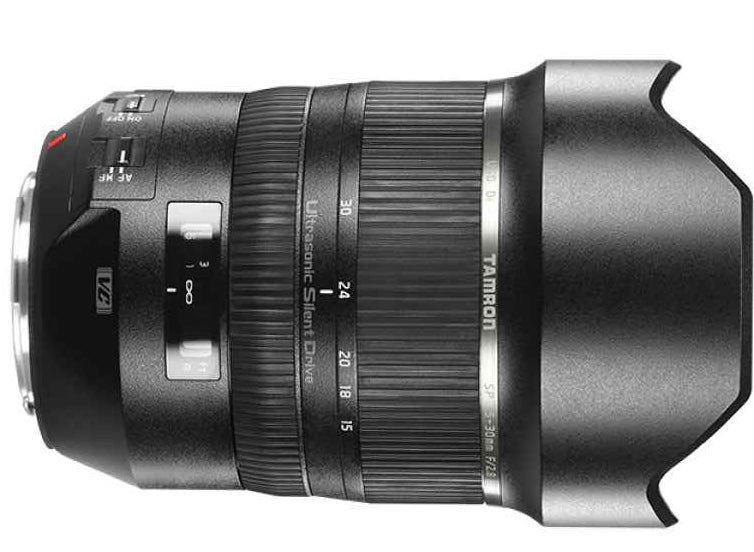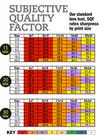Lens Test: Tamron 15–30mm f/2.8 Di VC USD
A wide-angle option with stabilization

We may earn revenue from the products available on this page and participate in affiliate programs. Learn more ›
Tamron delves even deeper into stabilized wide-angle lenses with this full-frame 15–30mm f/2.8. Following the ground-breaking 24–70mm f/2.8 stabilized lens, the newcomer ($1,199, street) is the world’s first high-speed zoom with shake control that reaches into ultrawide focal lengths.
Other distinguishing traits: its massive size. At more than 2.5 pounds and 5.75 inches long, it has consid-erably more heft than Sigma’s arguably comparable 18–35mm APS-C zoom—a constant f/1.8. Our Tamron is also about a half-pound heavier than the Sony Zeiss 16–35mm f/2.8 and a pound heavier than either of Canon’s 16–35mms. It’s an inch or so longer than all three.
Among its 13 groups, there’s an XGM (Expanded Glass Molded) aspherical element placed up front and several LD elements behind it; all promise to tamp down effects such as chromatic aberration. The lens’s protruding front element prevents the use of threaded filters; there’s also no provision for rear-mounted acetate gels. The lens does, however, offer a fixed, reinforced lenshood (sort of like a hood within a hood) that protects the bulging and vulnerable front element from scratching.
In the Popular Photography Test Lab, the lens’s SQF sharpness results fell in the Excellent range at all focal lengths. In our DxO Analyzer 5.3 tests of distortion control, at its sweet spot of 20mm, this lens held barrel distortion to the Imperceptible range (0.04%), a welcome performance.
Light falloff was much improved over Tamron’s 24–70mm f/2.8 VC lens which, at 24mm, vignetted at all apertures. In contrast, at its widest focal length, the new Tamron showed no sign of edge falloff by f/5.6. Nice.
Tamron’s Vibration Control system delivered 2.5 extra stops of handheld sharpness, beating our other comparable stabilized lens, the Canon 16–35mm f/4L, which came in at 2.33 stops.
Practically speaking, Tamron’s 15–30mm is a steal: almost half the price of the Sony Zeiss 16–35mm f/2.8 and about $500 less than the Canon 16–35mm f/2.8 and Nikon 14–24mm f/2.8G. None of these offer stabilization. Who can resist?
Check out our Hands On review of this lens and see sample images here.
SPECIFICATIONS
15–30mm (15.01–29.57mm tested), f/2.8 (f/2.65–2.94 tested), 18 elements in 13 groups. Focus ring turns 120 degrees. Zoom ring turns 80 degrees. Focal length marked at 15-, 18-, 20-, 24-, and 30mm.
Diagonal view angle: 110–71 degrees
Weight: 2.53 lbs
Filter Size: n.a.
Mounts: Canon AF, Nikon AF, Sony AF
Included: Silkypix developer studio software
Street price: $1,199
Website: tamron-usa.com
TEST RESULTS
Distortion: At 15mm, 0.55% (Visible) barrel; at 20mm, 0.04% (Imperceptible) barrel; at 30mm, 0.24% (Slight) pincushion
Light Falloff: At 15mm, f/5.6; at 20mm, f/4; at 30mm, f/3.5
Close-Focusing Distance: 10.33 inches
Maximum Magnification Ratio: At 15mm, 1:7.26; at 20mm, 1:5.72; at 30mm, 1:4.32
Image Stabilization: 2.50 stops
